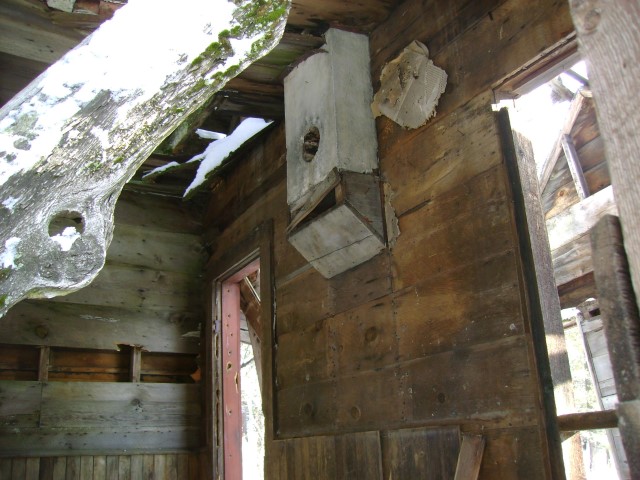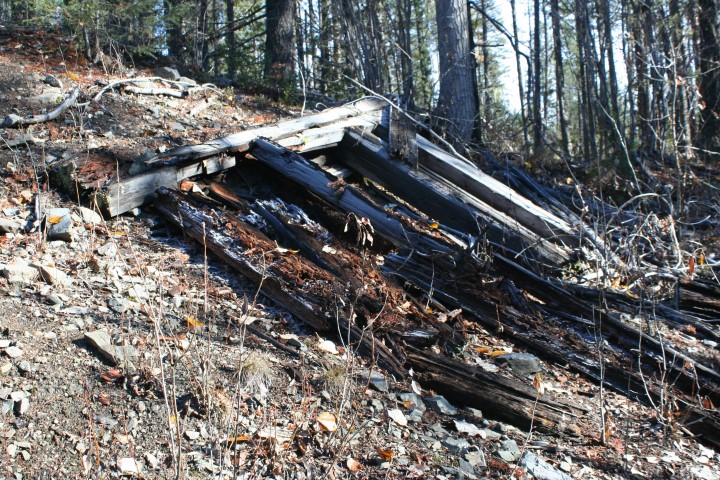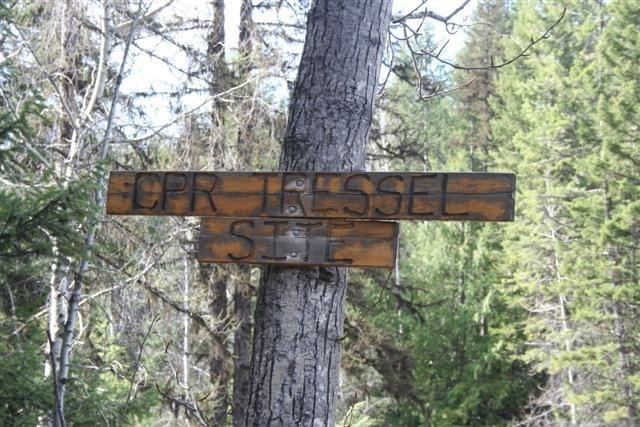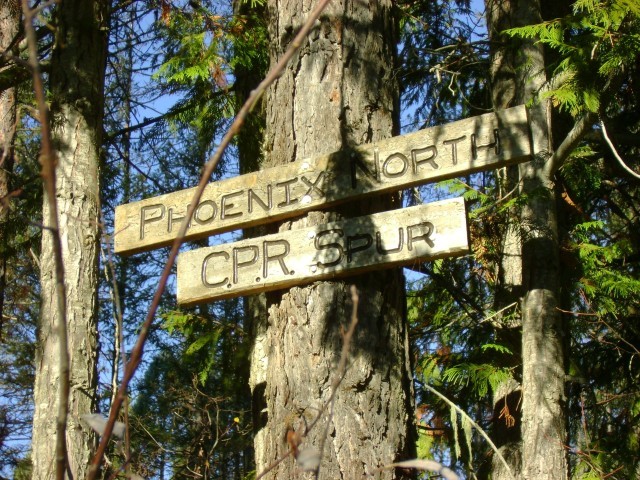Coal Creek, Washington
Coal was discovered along Coal Creek in 1863. Two surveyors made the discovery while working for the General Land Office. By 1872 over 75 tons of coal per day were being produced at Newcastle and shipped to Seattle. The Seattle and Walla Walla Railroad was one of the first to be built in the area. By 1876 the Newcastle mines produced 400 tons of coal per day and employed over 250 men. The Ford Slope Mine, which descended over 1700 feet (200 feet below sea level), was the largest in the area. Parts of the old town of Newcastle had separate names such as Red Town, Rainbow Town and Finn Town because many of the houses were painted red, along with other bright colors favored by the ethnic groups that worked in the mine. A cemetery near Lake Boren is from the original town. It is said that a locomotive slipped off the tracks and fell into the lake and is still there to this day.
The Ford Slope Mine operated from 1905 to 1926, and the last mine closed in 1963. Hiking along Coal Creek Trail you will find an old mine shaft, North Fork Falls, a locomotive turntable, and many artifacts of the old mining days. An easy hike with beautiful scenery.
The Ford Slope Mine operated from 1905 to 1926, and the last mine closed in 1963. Hiking along Coal Creek Trail you will find an old mine shaft, North Fork Falls, a locomotive turntable, and many artifacts of the old mining days. An easy hike with beautiful scenery.
Mine shaft
Chunk of coal
North Fork Falls
Turntable for the locamotive
Remains of the Coal Creek Hotel
Artifacts
Spider web in the rain
Foundation for the main hoist
The Sacred Heart Catholic Church
Sacred Heart Catholic Church is situated about 3 miles from Bridesville, BC. In 1930 the Dumont brothers, and several neighbors built the Sacred Heart Catholic Church on Rock Mountain. Reverend A.K. McIntyre (Father Mac) was the first clergyman to serve the church. The last mass was held in 1965.
Shannon Falls
Shannon Falls was named after William Shannon who owned the falls around 1889. He used the clay in the area to make bricks. In 1900 he sold the surrounding area to Britannia Copper Mines. In 1976 the area was purchased by Carling O'Keefe Brewery, who used the mountain water for their beer. In 1982 O'Keefe donated the land to BC Parks. Shannon Park covers 210 acres and the Falls is the third highest in BC. The water falls from a height of 1099 feet. The Falls and area are commonly used in TV and film production. There is a 4.5 mile hiking trail to Upper Shannon Falls. Shannon Falls is located about one and a half miles south of Squamish, BC.
watch a video on Shannon Falls
On September 21, 1877 Barrington Price opened a Grist Mill and store on the Dewdney Trail near Keremeos BC. The local people no longer had to travel 170 miles to Orville to get their flour. In the 1880's new equipment was installed to make fine white flour.
When business declined in the 1890's, the log store was converted to a home and the top floor of the Grist Mill became a chicken house. All of the machinery was stored in the lower floor of the mill. In 1979 the site was purchased by the British Columbia Heritage Trust. This little mill now appears to be the only remaining mill from that period of time in western Canada.
At the visitor center you can find gardening and history books, local crafts, heritage seeds, and, of course, freshly ground flour. In the tea room you can enjoy homemade lunches and freshly baked goodies. You can also take a short walk to the Heritage Gardens and find many older varieties of plants and trees which were grown in the 1800's.
We found the people at the Grist Mill very friendly and informative.
When business declined in the 1890's, the log store was converted to a home and the top floor of the Grist Mill became a chicken house. All of the machinery was stored in the lower floor of the mill. In 1979 the site was purchased by the British Columbia Heritage Trust. This little mill now appears to be the only remaining mill from that period of time in western Canada.
At the visitor center you can find gardening and history books, local crafts, heritage seeds, and, of course, freshly ground flour. In the tea room you can enjoy homemade lunches and freshly baked goodies. You can also take a short walk to the Heritage Gardens and find many older varieties of plants and trees which were grown in the 1800's.
We found the people at the Grist Mill very friendly and informative.
Click here to watch a video on the Grist Mill
The CPR & GNR Denoro Crossing
This CPR Junction was first called B.C. Junction as there was a two and a half mile spur line to the British Columbia Copper Company Mine. Later it was called Coltern and then changed again to Denoro after a spur was added to the Oro Denoro Mine. At this junction the CPR, under its 231 foot long tressel, connected the Great Northern Railways (GNR) main line to Phoenix. CPR had a loading spur at the Denoro Crossing for the Emma Mine.
All that is left of the tressel
Not much left of the No 1 building
Remains of the headframe
The Emma Mine
The Emma Mine is located northeast of Greenwood on the divide between Fisherman and Eholt Creeks near the Denoro Junction. Ore was exposed during construction of the CPR in 1894. That is how the Emma Mine started. In 1902 they mined the ore off the surface and the ore was sent to the smelter in Nelson. In 1905 production derived from underground development. The mine consisted of two compartments. The main shaft was a double compartment and was driven 272 feet. Levels were blasted, one at 150 feet and one at 250 feet. An audit was also driven 387 feet. In February of 1912 a fire destroyed the head frame. In 1916 the Consolidated Mining and Smelting Company purchased and restored the mine. Ore was then used as flux in their smelter in Grand Forks. The mine closed in 1921.
Production totaled 266,250 tons of ore containing, 467 pounds of gold, 5366 pounds of silver, and 2590 tons of copper.
Production totaled 266,250 tons of ore containing, 467 pounds of gold, 5366 pounds of silver, and 2590 tons of copper.
A video on the Coal Creek Trail
Denoro Mine
For more information see Oro Denoro Mine
CPR's Train Wreck near Denoro Junction (1904)
Bent track
Most of the wreck is burried under rock
Watch a video on The Emma Mine and the CPR Train Wreck
The Grist Mill
In August of 1904 Shay #1901 was hauling 24 cars of ore, one empty car and a caboose from Phoenix to Eholt when the brakes failed. The crew tried to slow the train down with the hand brakes and reversing the engine, but in reversing the engine it wiped out all the teeth on the crown gears on the wheels. The crew jumped and the train continued to a curve near Denoro Crossing and then pilled up to a heap scattering 750 tons of ore over the landscape.


Our Vimeo Channel: The Goldseekers


More on the 1904 Train Wreck
>>>>>>>>>>>>>





